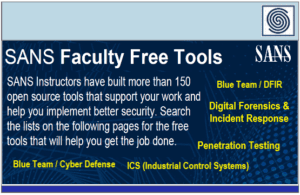Cisco Evolved Programmable Network Manager and Cisco Prime Infrastructure Stored Cross-Site Scripting Vulnerability
Summary
-
A vulnerability in the web-based management interface of Cisco Evolved Programmable Network Manager (EPNM) and Cisco Prime Infrastructure could allow an authenticated, low-privileged, remote attacker to conduct a stored cross-site scripting (XSS) attack against a user of the interface.
This vulnerability exists because the web-based management interface does not properly validate user-supplied input. An attacker could exploit this vulnerability by injecting malicious code into a specific page of the interface. A successful exploit could allow the attacker to execute arbitrary script code in the context of the affected interface or access sensitive browser-based information. To exploit this vulnerability, the attacker must have at least a low-privileged account on an affected device.
Cisco has released software updates that address this vulnerability. There are no workarounds that address this vulnerability.
This advisory is available at the following link:
https://sec.cloudapps.cisco.com/security/center/content/CiscoSecurityAdvisory/cisco-sa-epnmpi-sxss-yyf2zkXs
Affected Products
-
At the time of publication, this vulnerability affected the following Cisco products, regardless of device configuration:
- EPNM
- Prime Infrastructure
For information about which Cisco software releases were vulnerable at the time of publication, see the Fixed Software section of this advisory. See the Details section in the bug ID(s) at the top of this advisory for the most complete and current information.
Only products listed in the Vulnerable Products section of this advisory are known to be affected by this vulnerability.
Workarounds
Fixed Software
-
When considering software upgrades, customers are advised to regularly consult the advisories for Cisco products, which are available from the Cisco Security Advisories page, to determine exposure and a complete upgrade solution.
In all cases, customers should ensure that the devices to be upgraded contain sufficient memory and confirm that current hardware and software configurations will continue to be supported properly by the new release. If the information is not clear, customers are advised to contact the Cisco Technical Assistance Center (TAC) or their contracted maintenance providers.
Fixed Releases
At the time of publication, the release information in the following tables was accurate. See the Details section in the bug IDs at the top of this advisory for the most complete and current information.
The left column lists Cisco software releases, and the right column indicates whether a release was affected by the vulnerability that is described in this advisory and which release included the fix for this vulnerability.
| Cisco EPNM Release |
First Fixed Release |
| 7.1 and earlier |
Migrate to a fixed release. |
| 8.0 |
8.0.0 |
| Cisco Prime Infrastructure Release |
First Fixed Release |
| 3.10 |
3.10.6 |
The Cisco Product Security Incident Response Team (PSIRT) validates only the affected and fixed release information that is documented in this advisory.
Exploitation and Public Announcements
Source
Cisco Security Vulnerability Policy
-
To learn about Cisco security vulnerability disclosure policies and publications, see the Security Vulnerability Policy. This document also contains instructions for obtaining fixed software and receiving security vulnerability information from Cisco.
Related to This Advisory
URL
Revision History
-
| Version |
Description |
Section |
Status |
Date |
| 1.0 |
Initial public release. |
– |
Final |
2024-NOV-06 |
Show Less
Legal Disclaimer
-
THIS DOCUMENT IS PROVIDED ON AN “AS IS” BASIS AND DOES NOT IMPLY ANY KIND OF GUARANTEE OR WARRANTY, INCLUDING THE WARRANTIES OF MERCHANTABILITY OR FITNESS FOR A PARTICULAR USE. YOUR USE OF THE INFORMATION ON THE DOCUMENT OR MATERIALS LINKED FROM THE DOCUMENT IS AT YOUR OWN RISK. CISCO RESERVES THE RIGHT TO CHANGE OR UPDATE THIS DOCUMENT AT ANY TIME.
A standalone copy or paraphrase of the text of this document that omits the distribution URL is an uncontrolled copy and may lack important information or contain factual errors. The information in this document is intended for end users of Cisco products.
|



















































